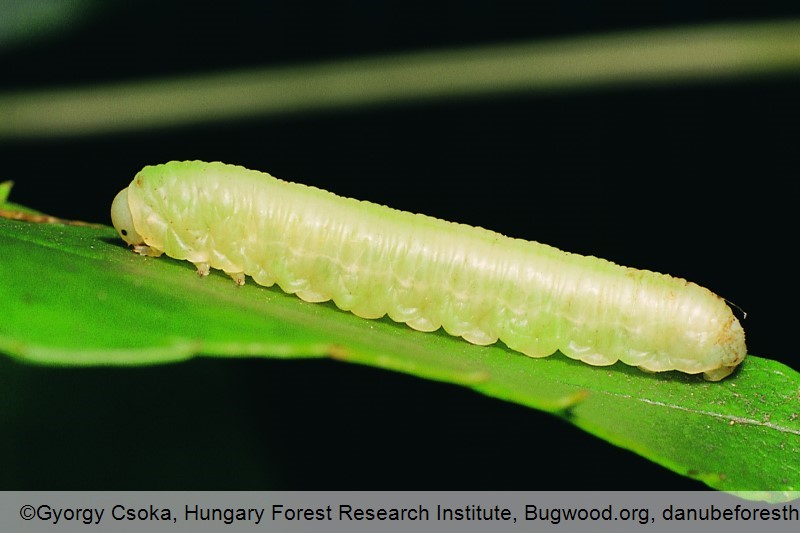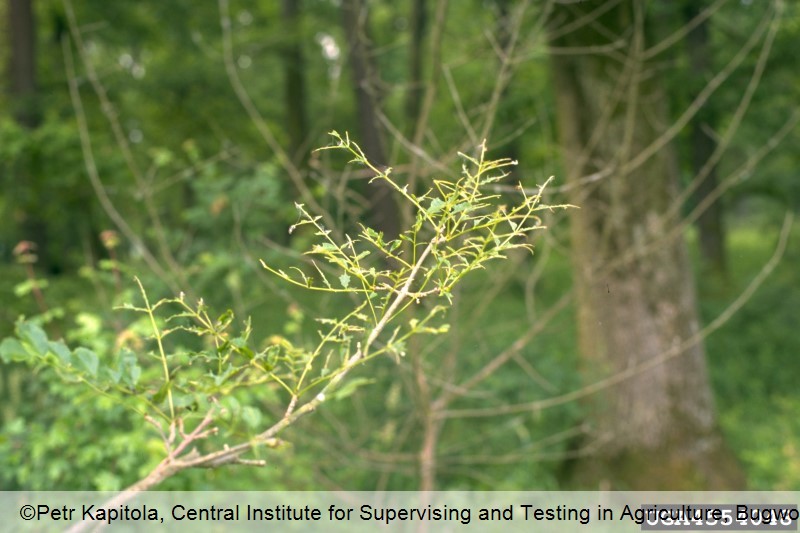Animalia
Black sawfly
Tomostethus nigritus
Maarten de Groot
|
|

Fig. 1. Adult of Tomostethus nigritus

Fig. 2. Larvae of Tomostethus nigritus

Fig. 3. Feeding damage on leaves of Tomostethus nigritus
DETECTION PERIOD:
March-May (flight period), May-June (damage)
DESCRIPTION:
Adults are small black wasps (7-8 mm). Larvae are in the beginning whitish or almost hyaline but become light green in the later stages. After finishing the last stage the larvae drop from the foliage on the ground and prepare shiny parchment like cocoon in the soil. They hibernate in the cocoon stage in the soil concentrated around root collars. Indicative for the presence of the species is the defoliation of the ash leaves.
HABITAT:
This species occurs on the leaves of all ash species (Fraxinus spp.). Occurs in forests as well as in urban areas.
STATUS:
Occurs in all countries in the REFOCuS area (Austria, Croatia, Hungary, Serbia and Slovenia). The density differentiates strongly between the countries.
IMPACT:
The black sawfly is attacking the leaves of ash trees. Under high populations this species can completely defoliate the trees. It was found that the impact of few years of defoliation on the health of the trees varies by individual trees.
SIMILAR SPECIES:
All small black sawfly species (genera: Pseudaprosthema, Pseudarge, Kokujewia, Aprosthema). However, there are not many species which are feeding on ash.
|